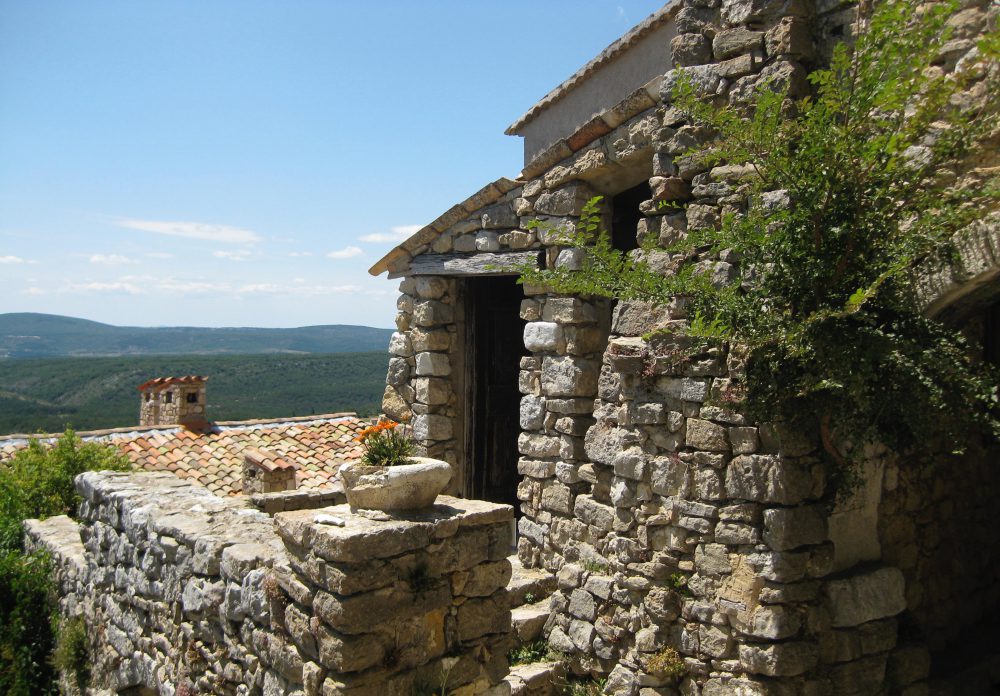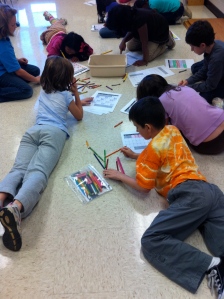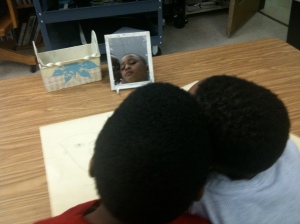“It was the best of times, it was the worst of times, it was the age of wisdom,it was the age of foolishness, it was the epoch of belief, it was the epoch of incredulity, it was the season of Light, it was the season of Darkness, it was the spring of hope, it was the winter of despair, we had everything before us, we had nothing before us, we were all going direct to heaven, we were all going direct the other way – in short, the period was so far like the present period, that some of its noisiest authorities insisted on its being received, for good or for evil, in the superlative degree of comparison only.”
Charles Dickens… Tale of Two Cities
Times are tough in public education right now. In back channel conversations, I hear many educators –administrators and teachers alike – express a troubling sentiment that the battles have just become so overwhelming it’s hard to keep coming back to work. Some of them long to return to the days when we could just “just close our doors and teach.” There’s a reason why, once upon a time, this phrase became a mantra among public educators. I suspect the phrase emerged when public education slid more deeply into a factory model; schools enlarged in size; and anonymity increased inside learning places as staff members and students grew apart.
Decades ago, in my first six months of teaching I first heard that catch phrase from an experienced teacher with whom I shared lab storage space. She was, fortunately for me, one of those “one in a million” teachers who both enthralled and related to learners. I learned from her the power of metaphor, story, and inquiry, not because I knew much of what was occurring in her classroom but because we co-sponsored an ecology club. I’ll never forget her describing the common mullein plant on one long-distance field trip. She began with a story of young Quaker girls rubbing their cheeks with it to simulate blush, which led to its common eastern name – Quaker’s Rouge. Then, for good measure, to make sure the boys didn’t lose interest, she shared a funny story alluding to its western name “cowboy toilet paper.” Then, she encouraged the kids to “try it out.”
She also taught me about the independent contractor model of teaching. It meant that she could perform just fine on her own. Any interference from peers and administrators inside the school or central office personnel outside the school was viewed as relatively irrelevant by her – more of the irritation of a mosquito buzzing that could be ignored than a bee sting that needed attention.
We educators know that independent contractors have existed in schools for a long time. They create their own worlds inside the classroom and school; instituting their own unique brands of order-disorder, control-freedom, or irresponsibility-responsibility as they, in isolation mostly, interact with those they were hired to serve. As long as they color inside the lines and know the unwritten rules of who not to offend, they can, for a career, exist pretty much on their own.
Reflecting back, I taught in a pretty isolated environment with little opportunity to learn from others. I needed to leverage significant commitment on my own part to study what were atypical expected practices in the day; use of mastery learning and Bloom’s taxonomy to plan units and assessments. I began to reach out and find others who felt similarly and we became, in some cases, lifelong critical friends. I learned alongside them what it takes to keep coming back to work in a career that’s never been easy, financially lucrative, or 9-5. Together, we supported each other to figure out not just what to do, but why we continued to do it over and over again.
I’m convinced that one of the most important actions we need to take means abandoning forever more the phrase “close your doors and teach.” It has no place in today’s contemporary learning spaces. It’s an isolating maxim we can ill afford to use. We’re at a pivotal moment in America’s educational history; a time of high tension that’s as great as any we’ve experienced in this nation. Today, we need each other more than ever to ensure that we don’t give up coming back to work.
This tension we all experience isn’t just about the politics that permeate educational decision-making; a kind of politicizing of education that’s gone far beyond reasonable governance under the United States Constitution, state codes, or local policies. It’s not just about the economics of bad business decisions that’s led to devastating losses of resources needed to educate our young people at a time when this nation needs to close gaps across schools, districts, and states, not widen them. It’s not just about the inequality of personal wealth that’s created a “haves and have-nots” schism unlike anything in this nation’s recent history. And, it’s not just a result of the 24/7 media preoccupation with market share that’s caused reporters to chase negative stories about education that in no way reflect the mainstream of teaching and learning occurring day in and out across America.
These are all symptoms of a much bigger problem. Indeed, we have become exactly what a system of scientific management by fiat set up public education to be – factory schools in which workers band together mostly for their protection rather than to engage in their profession. The unified impact of current-state politics, economics, class divides, media and educational institutionalization has supersized a national paranoia that threatens the Statue of Liberty schooling model that inspired many of us to enter teaching.
It’s no coincidence that first generation college graduates became the educational workforce of the last century, fueling the life cycle of public education. Many of us pursued educational careers because we aspired to become the teacher who helped us achieve our goal of becoming a college graduate.
Today, some among us discourage those we teach from considering the profession. Our own children watch us work and we hear them say “I’d never want to teach.” In the middle of the night, I ask, “How close are we as a nation to endangering the life cycle of public education by disrupting the flow of energetic, young people into our profession? What’ll be the impact of a workforce of temporary teachers stopping in for the short-term rather than being dedicated to a lifetime journey towards masterful teaching? Who will teach our children in the future?”
Now, more than ever, we educators need each other. We need each other to make sure we keep coming back to work; that we don’t quit. We need to learn from each other- new technologies, new strategies, and new ways of connecting with the young people we serve. We need each other to challenge the status quo, to question change, and to take responsibility for the critical shifts we must make to advance our work.
We also need each other not just for inspiration and to reach our own career aspirations but, most importantly, to act together on behalf of all the young people who depend on us for inspiration, to reach their own aspirations, and to sustain their hope for the best of times as they journey toward their own futures.
We educators live in a crucible of heated discontent right now. We’ve for sure created some of the heat ourselves. It’s also generated by variables we don’t control. However, of this I am certain, there is nothing more powerful than the work we do. Now more than ever, we must open our doors and learn to talk with each other. We must maximize our professional voice in every forum available to us. We must remind each other and every community in this country that educators still keep alive the “spring of hope and season of Light” for all of America’s children. We’ve “everything before us.” It’s our story. It’s our nation’s cycle of life.
It’s why I #blog4reform.








Pam, this is beautifully written and captures the feelings of many of us. There is so much “white noise” regarding education reform these days, mostly from folks who could not teach a class, lead a school building, or a school district if given the chance. My hope in my work with my staff and with you that we can destroy the independent contractor idea in education in a respectful, meaningful, and culturally significant way in our schools. I view it as my life’s work. Thanks for the post.
Thanks for the encouragement!
Brilliant characterization of where we are, Pam – thank you.
So, what’s the solution vis a vis using independent contractors in new ways outside their silos?
I feel like one of those contractors, but am eager to share with my network of critical friends. I don’t necessarily want the protection afforded by banding together with others in a building or system, but I sometimes experience difficulty talking about what I do at the micro-local level – with the teachers next door and around the corner.
How does a division manufacture rigorous and trusting interplay between independent contractors and their banded peers? How do you create the flexibility and environments to bring together those critical, independent friends? How do they share out what they do so it contributes to the division and to public education? How does this not fall entirely on the contractors who are back-channeling away anyway? Does any of this happen via data-driven PLC work? Is risking or sharing failure okay there?
I love this post for its clarity, for its accuracy, and for the questions it inspires.
We need to band together and talk, but about what and how?
With gratitude,
Chad
Thank you so much for this post. I actually came into teaching because I enjoyed that entrepreneur feel of being able to close my door. Yet, when I became a principal, I kept my door open because I wanted to connect and not feel on my own. Building community amongst teachers is so important and what I work for every day.
-Mary
@Edu_Traveler
Mary,
First, thank you for your comment. I think we all must work on reaching out to others with whom we work and make the effort to connect as you have done as a principal. Being a model for what we want our classroom communities to become starts with the principal leader in a school. If we don’t walk the walk as a connector and relationship-builder, then we set the stage for that to be the normative behavior inside a school. I also think we have to think about differentiation of our work based on where those with whom we work are. I have recently learned from a colleague and friend the importance of giving permission to teachers to act on their sense of what they need to do to make learning comfortable for children. Perhaps we also need to give ourselves permission to make learning comfortable for the adults with whom we work. How do you do that as a community builder?
I love your piece and share some of the same sentiments. I am very interested to hear what you suggest should be the action steps for educators to create the reform of which you blog. What should learning look like? What should professionalism look like? How shall we hold ourselves accountable for our own and our students’ learning? Please share more.
Joanne,
Thank you for your comments and great questions! I wonder a lot about the responsibility we have to creating the reforms we need. In my opinion, we are a profession that waits too much for others to give us guidance. Leaders need to give teachers permission to act on their sense of changes that would make learning comfortable for young people. In watching such a leader work with teachers across several buildings recently, it struck me that we aren’t explicit enough in the questions we ask that get at what teachers see as the needed shifts nor are we explicit enough in saying it’s okay to try something out that may challenge the normative culture or practice. I think this kind of reform begins with a shift to a distributive leadership model in which teachers and administrators work together on a more level playing field to guide change. Using instructional rounds as a tool to bring educators together to explore and analyze practice in a school provides such a frame. Interestingly, Richard Elmore’s work to create a model for instructional rounds in schools has been adopted by Scotland as a model for job-embedded development. Sometimes, I also think we make the work we need to do more complicated than it needs to be. We look for silver bullets that don’t exist when the answers really are at our fingertips. I also believe that we have to get very tight about an expectation for educators to internalize lifelong learning- we need to lead for that by example every day. Principals need to work with teachers to create an agenda that supports adult learning rather than allowing management of the business of schools to dominate teachers’ time. When we start working that way in all we do, we’ll be working from a position of professional strength, not one in which we feel we have to hold rules, policies, data, and supervision over educators. We’ll move from a carrot and stick model to one in which we work like professionals do in every other field. Professionalism looks, in my opinion, like teachers working together to hone pedagogical skills, engage in case study, refine knowledge, share resources, and seek advice and perspective. Everyone’s working to help others and everyone’s willing to learn from others.
Pingback: Blog 4 Real Education Reform – The Sequel « Cooperative Catalyst
Pingback: A Few of my Favorite Blogs « 21k12
Pam,
Thank you for the perspective and insight in this post. It has been a good frame within which to start the new year for me. The factory model of schooling and the independent contractor approach to teaching can’t work any more. Back when you and I were trying to figure out our teaching, our kids, and our lives (and middle school was the perfect place to do that!), the ways in which we organized for teaching and learning more or less reflected the world outside. And so, even though it might not have been best for students, schools were able to make it work.
Now, the world operates differently. I’m sitting in a coffee shop this morning with access to learning resources that would be unavailable to me in many schools. Ironically, most FACTORIES don’t even operate any more on what we think of as “the factory model”. They don’t because they know they can’t survive that way. And schools can’t either. Unless we retool, reconstruct, and relearn what teaching means, our students will go elsewhere to find what they need to know and be able to do.
Kind of a bummer perspective for such a beautiful day; the fact is that I am very optimistic about our future. We have many thoughtful, committed people working in schools who are taking action every day, and many more who are ready to act with the right support and leadership. We are close to the tipping point, and when we reach it public education will change for all kids, for good.
When a piece of ice is frozen in one form and changes into another shape, it melts first and then refreezes in its new form. Maybe we are melting a bit so that we can refreeze- different, stronger, more beautiful- in a new shape that prepares children for their future, not our past.
Hope 2011 is your best year ever!
Laurie
I am putting together a list of the top 100 administrator blogs and your site was recommended by another blogger on the list. I was wondering if I could ask you a few questions to include more information about you and your blog in my article. Please e-mail me at alexisbrett@gmail.com and include the title of your blog in the e-mail, thanks!
Oh yes, how we do need each other more than ever!Your article was insightful, getting at the root of many frustrations experienced today by our educators. Thank you for your clear articulation of our current challenges.
After 17 years in the classroom, I became involved in providing mentor training to veteran teachers who had the heart and skills, of course, to share with new teachers. As I continue along this pathway, I want to help embed this type of mentoring into the very fabric of schools so that all teachers, not just the new ones, can enjoy knowledge-sharing and a true environment of reciprocal support. I believe that in order to do this well, mentors need adequate training.
Yes, let’s use instructional rounds, observations, collaborations and sharing of resources. Also, to enhance this culture, I believe we can provide communication/coaching tools that instill confidence in those who would dare to share with colleagues.
Thanks for your comment, Carol. It’s great to hear from educators who are carrying the torch for public education and who see a spring of hope rather than one of dispair. Your passion speaks strongly in your words and I can only imagine that the novices with whom you work benefit greatly from your work with them. Our young people need you in this profession. Our young teachers need you in this profession. Our experienced teachers – your peers- need you in this profession. I appreciate your encouragement- they come at a good time tonight…